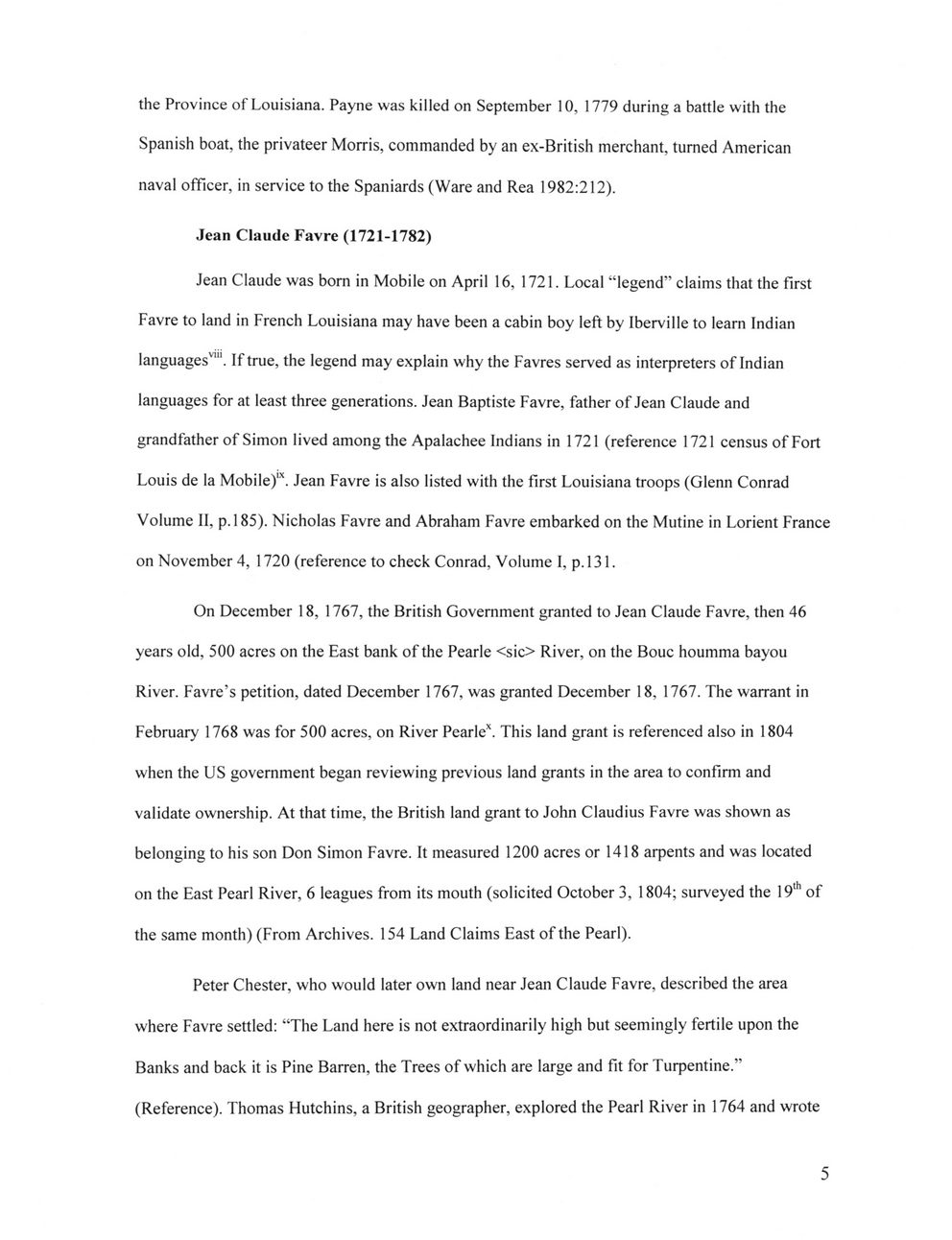This text was obtained via automated optical character recognition.
It has not been edited and may therefore contain several errors.
the Province of Louisiana. Payne was killed on September 10, 1779 during a battle with the Spanish boat, the privateer Morris, commanded by an ex-British merchant, turned American naval officer, in service to the Spaniards (Ware and Rea 1982:212). Jean Claude Favre (1721-1782) Jean Claude was born in Mobile on April 16, 1721. Local ?legend? claims that the first Favre to land in French Louisiana may have been a cabin boy left by Iberville to learn Indian languages?1. If true, the legend may explain why the Favres served as interpreters of Indian languages for at least three generations. Jean Baptiste Favre, father of Jean Claude and grandfather of Simon lived among the Apalachee Indians in 1721 (reference 1721 census of Fort Louis de la Mobile)lx. Jean Favre is also listed with the first Louisiana troops (Glenn Conrad Volume II, p. 185). Nicholas Favre and Abraham Favre embarked on the Mutine in Lorient France on November 4, 1720 (reference to check Conrad, Volume I, p. 131. On December 18, 1767, the British Government granted to Jean Claude Favre, then 46 years old, 500 acres on the East bank of the Pearle <sic> River, on the Bouc houmma bayou River. Favre?s petition, dated December 1767, was granted December 18, 1767. The warrant in February 1768 was for 500 acres, on River Pearlex. This land grant is referenced also in 1804 when the US government began reviewing previous land grants in the area to confirm and validate ownership. At that time, the British land grant to John Claudius Favre was shown as belonging to his son Don Simon Favre. It measured 1200 acres or 1418 arpents and was located on the East Pearl River, 6 leagues from its mouth (solicited October 3, 1804; surveyed the 19th of the same month) (From Archives. 154 Land Claims East of the Pearl). Peter Chester, who would later own land near Jean Claude Favre, described the area where Favre settled: ?The Land here is not extraordinarily high but seemingly fertile upon the Banks and back it is Pine Barren, the Trees of which are large and fit for Turpentine.? (Reference). Thomas Hutchins, a British geographer, explored the Pearl River in 1764 and wrote 5

Favre The-Favre-Family-in-Hancock-County-05